Volume 1, Issue 1
Research Journal of Disaster Education
Displaying 1-14 of 14 articles from this issue
- |<
- <
- 1
- >
- >|
-
2020 Volume 1 Issue 1 Pages 5-18
Published: 2020
Released on J-STAGE: October 19, 2021
Download PDF (2356K) -
2020 Volume 1 Issue 1 Pages 19-30
Published: 2020
Released on J-STAGE: October 19, 2021
Download PDF (695K) -
2020 Volume 1 Issue 1 Pages 31-41
Published: 2020
Released on J-STAGE: October 19, 2021
Download PDF (473K) -
2020 Volume 1 Issue 1 Pages 43-51
Published: 2020
Released on J-STAGE: October 19, 2021
Download PDF (617K) -
2020 Volume 1 Issue 1 Pages 53-64
Published: 2020
Released on J-STAGE: October 19, 2021
Download PDF (1631K) -
2020 Volume 1 Issue 1 Pages 67-79
Published: 2020
Released on J-STAGE: October 19, 2021
Download PDF (2103K) -
2020 Volume 1 Issue 1 Pages 81-92
Published: 2020
Released on J-STAGE: October 19, 2021
Download PDF (1046K) -
2020 Volume 1 Issue 1 Pages 93-105
Published: 2020
Released on J-STAGE: October 19, 2021
Download PDF (756K) -
2020 Volume 1 Issue 1 Pages 107-118
Published: 2020
Released on J-STAGE: October 19, 2021
Download PDF (593K) -
2020 Volume 1 Issue 1 Pages 119-128
Published: 2020
Released on J-STAGE: October 19, 2021
Download PDF (423K) -
2020 Volume 1 Issue 1 Pages 129-134
Published: 2020
Released on J-STAGE: October 19, 2021
Download PDF (388K) -
2020 Volume 1 Issue 1 Pages 135-140
Published: 2020
Released on J-STAGE: October 19, 2021
Download PDF (994K) -
2020 Volume 1 Issue 1 Pages 141-152
Published: 2020
Released on J-STAGE: October 19, 2021
Download PDF (1240K) -
2020 Volume 1 Issue 1 Pages 153-154
Published: 2020
Released on J-STAGE: October 19, 2021
Download PDF (1185K)
- |<
- <
- 1
- >
- >|
